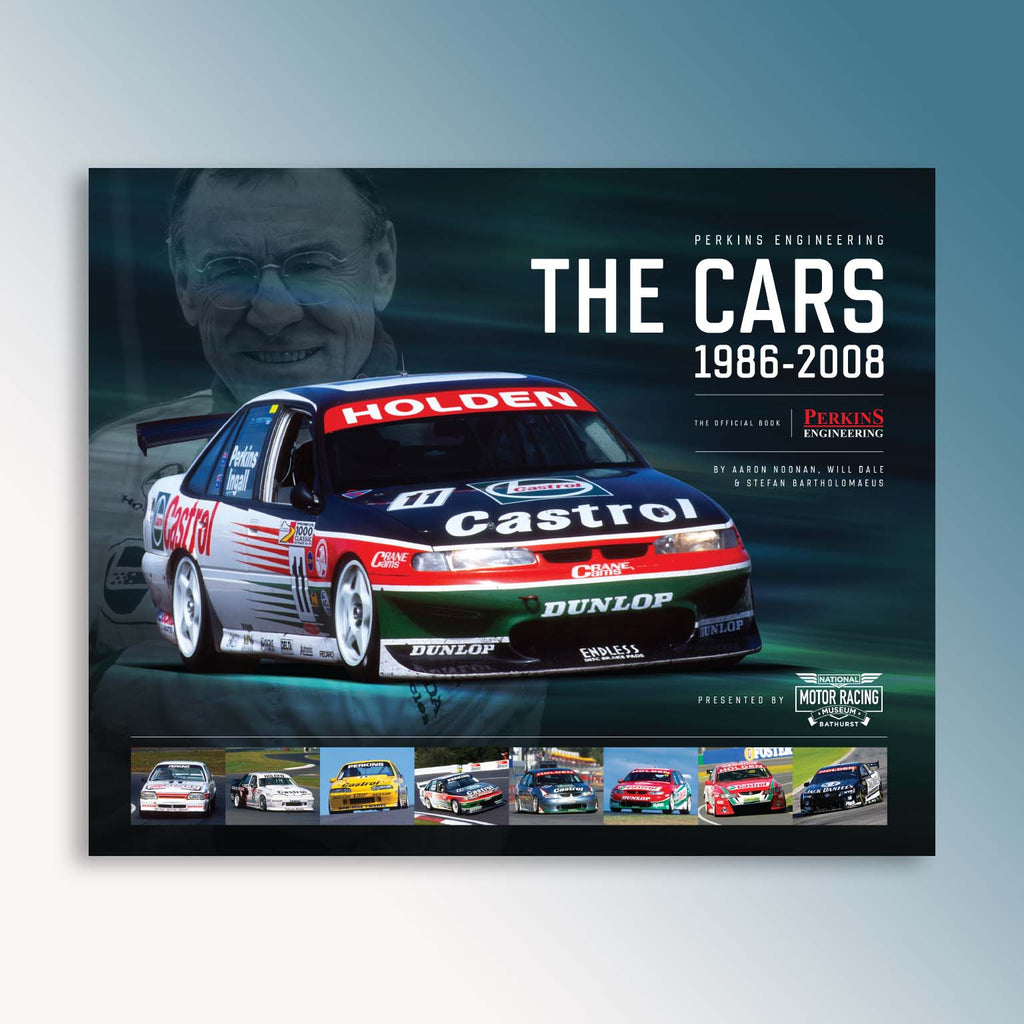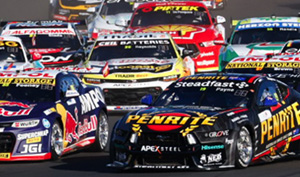“THERE’S only one spot there should be Larry’s bar and it ain’t in a race car!”
These were the words of Larry Perkins during Round 2 of the 2000 V8 Supercars Championship in Perth as he deflected questions over the so called ‘Larry Bar’ in his team’s latest Commodore.
Over two decades on, it remains one of the most famous innovations in the category’s history.
So, what was it? How did it come to be? And why was it controversial when it was introduced?
It’s a story told by V8 Sleuth’s Will Dale in the 2021 book, Perkins Engineering: The Cars: 1986-2008, of which limited stock of unnumbered copies remain available in the V8 Sleuth Superstore.
As most V8 Sleuth readers will know, the term Larry Bar refers to a chrome-moly steel tube that ran diagonally across the front of the roll cage, connecting the top of the A-pillar on the driver’s side to the bottom of the A-pillar on the passenger’s side.
The first one appeared in PE 036; a new car built for Russell Ingall ahead of the 2000 season with a heavily redesigned roll cage and dubbed the ‘Silver Bullet’.
While the bar later showed to mark an improvement in driver safety (most dramatically demonstrated during Craig Lowndes’ famous ‘wheel in the windscreen’ incident at Bathurst in 2005), it originated from a session on Perkins Engineering’s chassis twisting rig.
Roll cages had been a major development area in the latter half of the 1990s as teams designed increasingly complex bar work in pursuit of a stiffer chassis.
As the new decade dawned, Perkins Engineering was working hard to claw back what had become an area of weakness compared to its rivals.

“We were twisting (the chassis) and measuring it and finding out where it bent, and we found we got a significant gain by putting a diagonal bar across the windscreen,” Perkins explained in interviews for the 2021 book.
“I sat in and out of the car while we were adjusting where the bar could go and still keep visibility for the driver, and we kept reading the rules to make sure we were right.”
PE 036’s roll cage passed its initial CAMS technical inspection, but rival teams claimed the bar didn’t abide by the letter of the rules. A meeting of TEGA’s Technical Committee on the eve of the first round of the championship also cleared the car.
Perkins fumed at the time: “I’m annoyed that what can only be called sour-grape whingeing has led to me having to prepare for and attend a two-hour meeting. There was nothing tabled and everything was unanimously kosher!”
But it didn’t end there: the FIA notified CAMS that it was banning cross-bracing like the Larry Bar, forcing another meeting of the TEGA Technical Committee ahead of the support races at the Australian Grand Prix – where the bar was again approved for use.

“We had a V8 Supercar rule book, but it was still totally subservient to the CAMS manual and, on FIA roll bars, the manual was crystal clear on manufacturers of roll bars,” Perkins reflected in 2021.
“To be deemed a manufacturer you had to be certified by CAMS; CAMS had certified many of our roll bars under previous rules before that, so I was deemed by those rules as a manufacturer, so effectively I could do as I liked.”
The Larry Bar quickly became commonplace in V8 Supercar chassis, although some teams were faster in their uptake than others.
The Holden Racing Team, Gibson Motor Sport and Dick Johnson Racing added such bars to their existing cars by the Barbagallo round, while leading Ford squad Stone Brothers Racing didn’t add the bar to their Falcons until mid-year.
Ironically, Perkins himself wouldn’t race a car with a Larry Bar until the debut of PE 037 later in the 2000 season.
The Larry Bar remained an integral part of V8 Supercar roll cages all the way through to the end of the Project Blueprint era in 2012.
A move from glass to the stronger polycarbonate windscreens under Car of the Future in 2013 allowed the new control cage to drop the Larry Bar without compromising safety.





